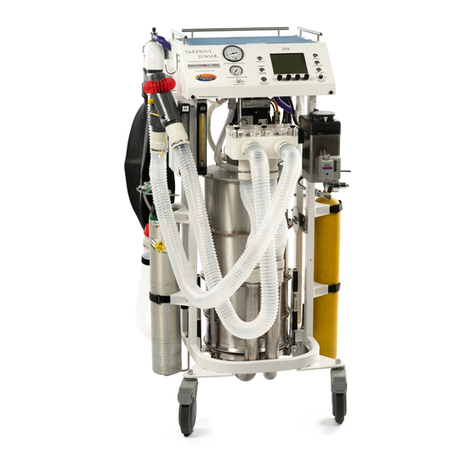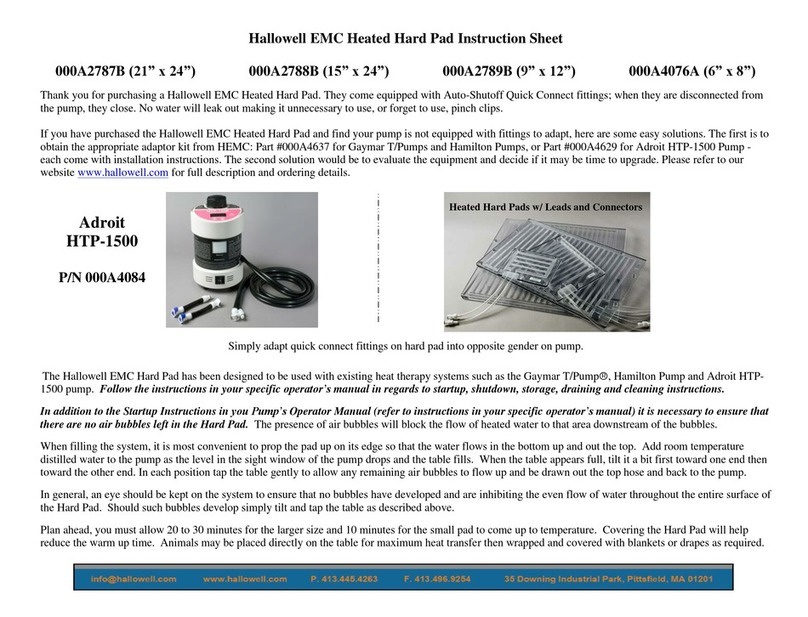2/26/2018 DOCA3667B Pro Series Operating Manual.doc 4 of 22
WARRANTY
The Model 2002PRO /2002IEPRO Veterinary Anesthesia Ventilator is covered under the
warranty expressed on the warranty card attached to the unit at the time of sale to the end user,
which reads as follows:
LIMITED WARRANTY STATEMENT
WHAT THIS WARRANTY COVERS:
HEMC offers you a limited warranty that the enclosed subscriber unit and its enclosed
accessories will be free from defects in material and workmanship, according to the following
terms and conditions:
1. The limited warranty for the product extends for TWENTY-FOUR (24) MONTHS beginning
on the date of purchase of the product with valid proof of purchase.
2. The limited warranty extends only to the original purchaser of the product and is not assignable
or transferable to any subsequent purchaser. Only through a HEMC authorized Dealer the
warranty can be transferred to the original end user.
3. The housing, bellows and cosmetic parts shall be free of defects at the time of shipment and,
therefore, shall not be covered under these limited warranty terms.
4. Upon request from HEMC, the consumer must provide information to reasonably prove the
date of purchase.
5. The customer shall bear the cost of shipping the product to the Customer Service Department
of HEMC. HEMC shall bear the cost of shipping the product back to the consumer after the
completion of service under this limited warranty.
WHAT THIS WARRANTY DOES NOT COVER:
1. Defects or damages resulting from use of the product in other than its normal and customary
manner.
2. Defects or damages from abnormal use, abnormal conditions, improper storage, exposure to
moisture or dampness, unauthorized modifications, unauthorized connections, unauthorized
repair, misuse, neglect, abuse, accident, alteration, improper installation, or other acts which are
not the fault of HEMC, including damage caused by shipping, blown fuses, spills of food or
liquid.
3. Alleged defect or malfunction of the product during the applicable limited warranty period not
reported by the end user to HEMC prior to the expiration of the warranty period as defined.
4. Products which have had the serial number removed or made illegible.
5. Damage resulting from use of non-HEMC approved accessories.
6. All plastic surfaces and all other externally exposed parts that are scratched or damaged due to
normal customer use.
7. Products operated outside published maximum ratings.
8. Products used or obtained in a rental program.
9. Consumables (such as fuses).
10. This limited warranty is in lieu of all other warranties, expressed or implied either in fact or
by operations of law, statutory or otherwise, including, but not limited to any implied warranty of
marketability or fitness for a particular use.
WHAT HEMC WILL DO?
HEMC will, at its sole discretion, either repair, replace or refund the purchase price of any unit
that does not conform to this limited warranty. HEMC may choose at its discretion to use
functionally equivalent reconditioned, refurbished or new units or parts.






























